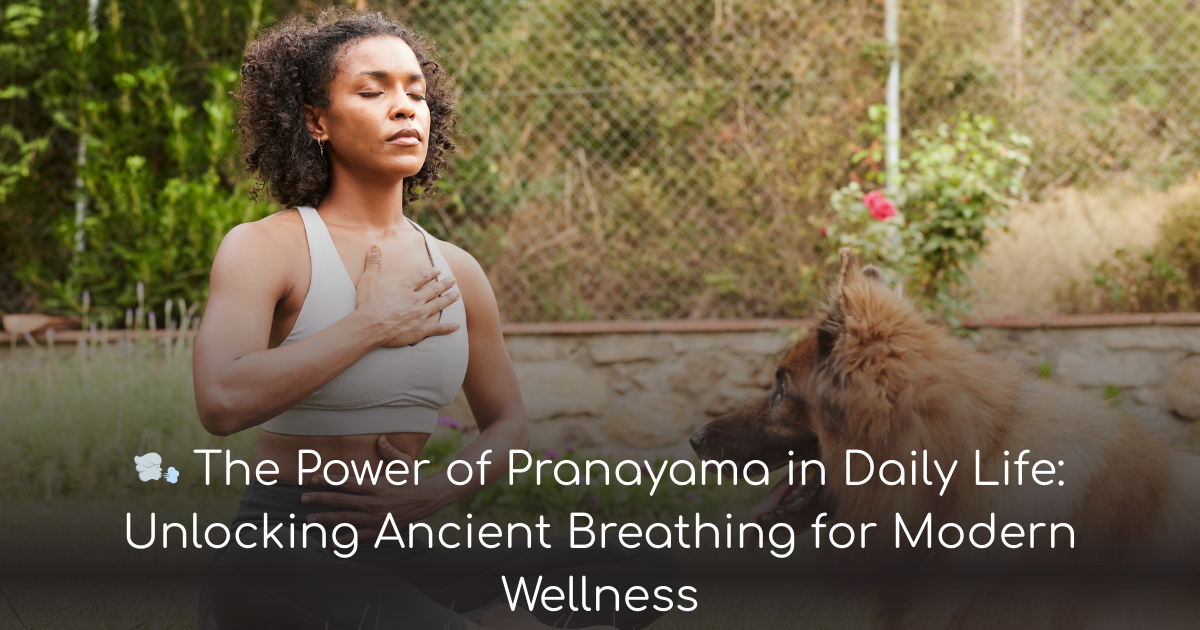7 powerful secrets of kashi vishwanath that inspire bliss

Discover the spiritual power of Kashi Vishwanath Temple—the eternal city of light and liberation. Learn its history, rituals, legends, and how to plan your pilgrimage.
Kashi Vishwanath: The Eternal City of Light and Liberation
Kashi Vishwanath—the name alone evokes a sense of eternal divinity, boundless light, and cosmic liberation. Known as the spiritual nucleus of Sanatan Dharma, Kashi Vishwanath is not just a temple; it is the very breath of India’s timeless soul. Nestled in the ancient city of Varanasi, also called Kashi or Benares, this sacred Jyotirlinga has drawn saints, sages, and seekers for millennia.
For the faithful, Kashi Vishwanath: The Eternal City of Light and Liberation is more than a place—it’s a spiritual destination where the earthly merges with the eternal. It is believed that Lord Shiva himself resides here in his supreme light form, blessing devotees with knowledge, purity, and moksha.
In this two-part exploration, we’ll delve into the divine energy of this sacred site—from its spiritual significance and historic resilience, to the timeless legends and rituals that continue to inspire millions. Let us begin our sacred journey.
Kashi Vishwanath Temple – A Beacon of Faith
The Kashi Vishwanath Temple stands on the western bank of the holy Ganga River in Varanasi. It is one of the twelve Jyotirlingas—the most revered shrines of Lord Shiva—and is considered the spiritual epicenter of the universe.
According to ancient scriptures, just one glimpse of the Jyotirlinga here can wash away lifetimes of karma. Unlike other temples where devotees go to seek blessings, at Kashi Vishwanath, they come to surrender. It’s here that the boundaries between life and death blur, and one feels the transcendental presence of Shiva in every breeze, every chant, every stone.
The Kashi Vishwanath Temple is renowned for its golden spires, which glisten like a flame against the sky. Inside, the linga is enshrined in a small sanctum, continuously bathed in milk, water, and sacred offerings by priests and devotees alike.
The unwavering faith of devotees, some of whom travel across continents, testifies to the temple’s enduring aura. Whether you are a scholar, a sanyasi, or a simple devotee, you are welcomed equally into its sanctum of serenity and silence.
Spiritual Significance of Kashi
Kashi is not merely a city—it is “Avimukta Kshetra,” a place never forsaken by Lord Shiva. Hindu cosmology places Kashi outside the limits of time and space. Here, Shiva whispers the Taraka Mantra into the ears of the dying, ensuring their passage into moksha—liberation from the endless cycle of birth and rebirth.
The spiritual significance of Kashi is enshrined in the Vedas and Puranas. It is described as a tirtha that exists in all yugas (epochs), radiating divine light. Sages like Adi Shankaracharya, Goswami Tulsidas, and Swami Vivekananda have walked its sacred streets and meditated by its ghats.
What makes Kashi unique is not only its association with liberation but also its celebration of life. From dawn’s Ganga Aarti to the cremation pyres of Manikarnika Ghat, Kashi embraces all dimensions of human experience, reminding us that birth, death, and rebirth are but moments in Shiva’s eternal dance.
When you walk the alleys of Kashi, it is as though time slows, and the divine rhythm of the cosmos pulses beneath your feet.
Jyotirlinga of Lord Shiva – A Portal to Liberation
Out of the twelve Jyotirlingas scattered across India, Kashi Vishwanath’s Jyotirlinga is regarded as the most sacred. The word “Jyotirlinga” means “Lingam of Light”—a radiant column of Shiva’s divine energy.
It is believed that once, Lord Brahma and Lord Vishnu argued about who was the Supreme Being. To settle the dispute, Lord Shiva manifested as an infinite column of light—the Jyotirlinga—and challenged them to find its beginning and end. Neither could, and hence the Jyotirlinga came to represent Shiva’s infinite and formless nature.
The Jyotirlinga of Kashi Vishwanath holds a unique place in this cosmic narrative. Here, Shiva is not just a destroyer but also a compassionate liberator. Worshipping the Jyotirlinga here is said to absolve even the gravest of sins, and those who die in Kashi are believed to attain moksha instantly, freed from the samsara of births and deaths.
This makes the temple not just a site of worship but a divine portal, a gateway to eternal liberation.
Varanasi Pilgrimage – The Journey of the Soul
The Varanasi pilgrimage is unlike any other. It begins at the ghats of the Ganga River, where thousands take a purifying dip at dawn. From there, they climb the ancient steps to the temple, where the air is filled with Vedic chants, the scent of incense, and the ever-present hum of "Har Har Mahadev."
Devotees follow a sacred sequence—first visiting the Kaal Bhairav temple, then the Annapurna Devi temple, and finally, offering themselves at the feet of Lord Vishwanath. It is a ritual that transcends formality and becomes deeply personal—a soul’s offering to the divine.
For many, the Varanasi pilgrimage is not a journey of miles but of inner transformation. Elders perform their final rites, families offer thanksgiving, yogis meditate on the ghats, and seekers come searching for answers that lie within.
Whether it’s your first visit or your hundredth, Varanasi never leaves you unchanged.
Kashi Temple History – A Story of Resilience
The Kashi Temple History is a saga of survival, devotion, and reconstruction. Its origins date back to ancient times, with references found in the Rigveda and Skanda Purana. Over centuries, the temple has been attacked, destroyed, and rebuilt many times—most notably during the invasions of the medieval period.
In 1780, the temple was rebuilt by Maharani Ahilyabai Holkar of Indore, whose devotion to Shiva is etched in stone and gold. She revived the sanctity of the site, establishing what we see today. The golden domes were later donated by Maharaja Ranjit Singh of Punjab.
Despite being demolished multiple times, the temple has always risen again—stronger and more revered than before. This resilience reflects not just the strength of the structure but the unshakable faith of the Sanatan Dharma devotees.
The history of Kashi Vishwanath Temple is not just a tale of architecture—it’s a living legacy of spiritual courage and divine endurance.
In Part 1, we’ve witnessed the glory of Kashi Vishwanath through its faith, light, history, and liberation. Yet, much remains to be discovered—from the sacred bond between the Ganga and Kashi to the mystical legends, rituals, and the transformative Kashi Corridor Project.
Let’s continue the rest of the signs and the action plan in Part 2 – you don’t want to miss it!
Continuing our spiritual journey through the divine corridors of Kashi Vishwanath, we now explore the sacred ties binding the city to the holy Ganga, the legends that breathe life into its stones, the daily rituals that kindle eternal devotion, and the modern strides taken to preserve and enhance this sacred legacy.
Ganga River and Kashi – A Sacred Bond
No discussion of Kashi Vishwanath is complete without the holy Ganga River and its intimate connection to Kashi. The river is more than water—it is the lifeblood of Varanasi and the purifier of souls.
Devotees believe that taking a dip in the Ganga before entering the temple cleanses all sins and prepares the heart for divine communion. The Ganga’s gentle flow mirrors the cycle of life and death, cleansing and renewing with each drop.
The ghats lining the riverbank are the stage for countless rituals—morning aartis with flickering lamps, sacred chants floating in the air, and the poignant cremation ceremonies at Manikarnika Ghat that promise the soul’s final release.
The Ganga River and Kashi together symbolize the eternal flow of consciousness—moving from the material to the spiritual, from bondage to liberation.
Kashi Corridor Project – Bridging Past and Present

To make this sacred space more accessible and preserve its ancient glory, the government initiated the Kashi Corridor Project—an ambitious redevelopment endeavor.
This project has created a wide, pedestrian-friendly path connecting the Kashi Vishwanath Temple directly to the ghats of the Ganga, allowing pilgrims a seamless spiritual experience. Along this corridor, ancient temples and archaeological treasures, long hidden, have been uncovered and restored.
The project beautifully marries modern infrastructure with ancient sanctity, ensuring that the timeless traditions of Kashi thrive in a contemporary world without losing their essence.
Legends of Kashi Vishwanath – Mystical Narratives
Kashi’s sacred soil is fertile with powerful legends that echo the city’s spiritual magnetism.
One popular tale tells of Lord Shiva choosing Kashi as his eternal abode, making it a city that can never be conquered by death or decay. It is said that no evil can prosper here, and Shiva himself guards his devotees with fierce compassion.
Another legend speaks of Goddess Annapurna, who resides in Kashi alongside Vishwanath, providing sustenance to all pilgrims and embodying divine nourishment—not just for the body but the soul.
These legends form the invisible thread weaving together the physical and metaphysical realms, drawing seekers into a deeper connection with the divine.
Rituals at Kashi Vishwanath Temple – A Daily Dialogue with the Divine
At the heart of Kashi Vishwanath’s spiritual energy lie its sacred rituals and poojas, practiced with unwavering devotion.
The day begins with Mangala Aarti, a predawn ceremony invoking Shiva’s blessings to dispel darkness. Throughout the day, priests perform the Rudrabhishek—an elaborate bathing of the Shiva linga with water, milk, honey, and sacred herbs, accompanied by chanting Vedic hymns.
The Panchamrit Abhishek, using five divine ingredients, is another important ritual symbolizing purification and nourishment.
During festivals like Maha Shivaratri, the temple comes alive with vibrant celebrations, attracting thousands of devotees who engage in continuous chanting and prayer.
These rituals are not mere traditions—they are a dialogue between the devotee and the divine, a sacred exchange that renews faith and devotion daily.
Importance of Moksha in Kashi – Liberation in Lord Shiva’s City
Above all, the importance of moksha in Kashi is what makes this city truly eternal.
Sanatan Dharma teaches that moksha—liberation from the endless cycle of birth, death, and rebirth—is the ultimate goal of human existence. Kashi Vishwanath, as the divine abode of Lord Shiva, promises this liberation.
It is believed that those who die in Kashi attain instant moksha, their souls freed from all earthly bonds. The nearby Manikarnika Ghat, where bodies are cremated, is regarded as the gateway to heaven.
This powerful belief turns the city into a sanctuary of hope and transformation, where devotees seek not just blessings for this life, but freedom for eternity.
Conclusion: Embrace the Light and Liberation of Kashi Vishwanath
From the golden spires of the temple to the sacred flow of the Ganga, from the timeless legends to the enduring rituals, Kashi Vishwanath: The Eternal City of Light and Liberation is a beacon for every soul seeking truth, peace, and salvation.
The temple stands not only as a monument of faith but as a living, breathing testament to the resilience of Sanatan Dharma, the power of divine love, and the promise of eternal liberation.
If your heart yearns for spiritual awakening, there is no better place to begin than Kashi—where every step, every chant, and every breath is a step closer to the infinite.
Plan Your Journey to Kashi Vishwanath with TravelEscape.me
To experience the sacred city with ease and comfort, consider using TravelEscape.me — your trusted partner for hassle-free transportation, expert guidance, and customized pilgrimage packages to Kashi and beyond. Begin your journey of light and liberation today!
10 FAQs on Kashi Vishwanath: The Eternal City of Light and Liberation
-
What is the significance of Kashi Vishwanath Temple?
Kashi Vishwanath Temple is one of the twelve Jyotirlingas and symbolizes Lord Shiva’s divine presence, offering spiritual liberation (moksha) to devotees. -
Why is Kashi called the ‘City of Light’?
Kashi is called the City of Light because it represents eternal knowledge, spiritual enlightenment, and the presence of Lord Shiva’s divine light. -
What is a Jyotirlinga?
A Jyotirlinga is a sacred shrine where Lord Shiva is worshipped in the form of a radiant column of light, representing his infinite and formless nature. -
Can visiting Kashi Vishwanath Temple help one attain moksha?
According to Hindu beliefs, visiting or dying in Kashi Vishwanath Temple grants liberation from the cycle of birth and death (moksha). -
What is the Kashi Corridor Project?
The Kashi Corridor Project is an initiative to connect the temple to the Ganga ghats via a spacious pathway, enhancing pilgrim access and restoring ancient sites. -
Who rebuilt the Kashi Vishwanath Temple in modern times?
Maharani Ahilyabai Holkar rebuilt the temple in 1780, and Maharaja Ranjit Singh later donated the golden dome. -
What rituals are performed at Kashi Vishwanath Temple?
Key rituals include Mangala Aarti, Rudrabhishek, and Panchamrit Abhishek, performed daily with devotion. -
Why is the Ganga River important to Kashi?
The Ganga purifies the soul; devotees bathe in it before temple visits to cleanse sins and prepare for divine communion. -
What festivals are celebrated at Kashi Vishwanath?
Maha Shivaratri is the major festival, marked by night-long prayers and celebrations. -
How can I plan a pilgrimage to Kashi Vishwanath?
You can plan your journey using travel services like TravelEscape.me for seamless transportation and guidance.
Reader’s Message & Call to Action
Dear Reader,
Thank you for joining this sacred journey through the Eternal City of Light and Liberation. May the divine energy of Kashi Vishwanath inspire peace, strength, and spiritual awakening in your life. If you feel called to experience this timeless sanctity, start planning your pilgrimage today.
Embark on your divine journey with ease — visit TravelEscape.me for trusted pilgrimage transportation and guidance. Let the light of Kashi illuminate your path!









